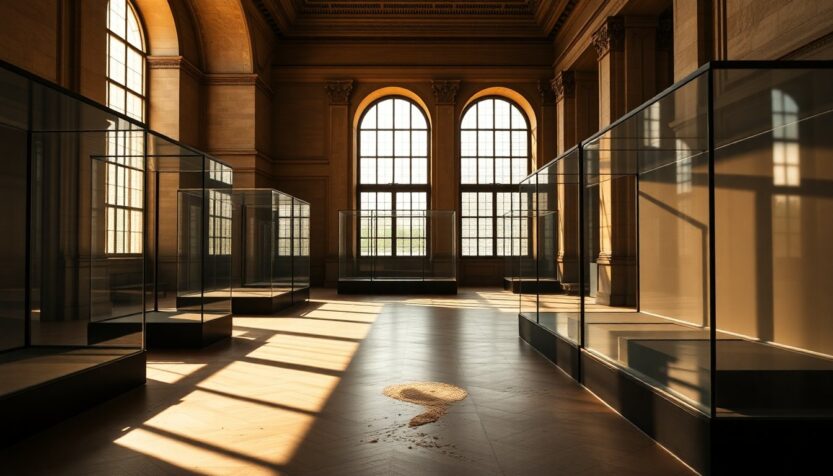The Louvre Museum in Paris, renowned for its extensive collection of art and historical artifacts, became the focus of significant attention following a daring theft early Sunday morning. This incident, which involved skilled thieves fleeing with invaluable jewels, has raised pressing questions about the museum’s security measures and preparedness. While the perpetrators executed their plan with apparent expertise, they also left behind crucial evidence that could assist in their capture.
Reports indicate that the thieves targeted the museum’s Galerie d’Apollon, which houses some of France’s most cherished crown jewels. They entered shortly after the museum opened, utilizing a mechanical lift to access a first-floor window. Despite their meticulous planning, the gang made several mistakes, providing law enforcement with leads to follow.
Details of the heist and its aftermath
According to eyewitness accounts, the theft unfolded rapidly. At approximately 9:30 AM, four individuals allegedly employed a truck equipped with a mechanical ladder to reach the balcony of the Apollo Gallery. Once inside, they threatened the guards and quickly broke into display cases containing valuable items. The entire operation reportedly lasted just four minutes, during which they managed to steal eight pieces of jewelry.
Security shortcomings revealed
An alarming detail that emerged after the theft was the absence of security cameras in roughly one-third of the rooms in the affected area. This lack of surveillance has prompted calls for an immediate review of security protocols at the museum. French authorities, including Culture Minister Rachida Dati, expressed disappointment over the incident and noted that one of the stolen items—a crown belonging to Empress Eugénie—was discovered discarded nearby, suggesting a hurried escape.
The French police are currently conducting a comprehensive investigation involving around 60 officers, focusing on the suspects’ escape route and analyzing available CCTV footage. The individuals are believed to be part of an organized crime group, raising concerns about the sophistication of their planning.
Implications for the future of the Louvre
This incident has ignited a national conversation regarding security measures at the Louvre. In a memo leaked earlier, the museum’s director, Laurence des Cars, highlighted a concerning level of obsolescence in security protocols. In response, President Emmanuel Macron announced a comprehensive renovation project aimed at enhancing both the museum’s infrastructure and its security systems.
Calls for improvement and modernization
As discussions surrounding the Louvre’s renovation progress, experts argue that focus must be placed on improving security measures rather than solely updating infrastructure. The museum’s complex layout, which includes numerous levels and varying wall thicknesses, has been identified as a potential vulnerability. Elaine Sciolino, a former Paris bureau chief for The New York Times, emphasizes that the museum’s historical design, originally a fortress, presents unique challenges for contemporary security needs.
Despite these challenges, the Louvre’s captivating history continues to attract millions of visitors each year. However, as its status as a leading cultural institution is tested, the urgency for enhanced security becomes increasingly critical. The heist serves as a stark reminder that even the most esteemed museums are not immune to criminal activity.
In the aftermath of this alarming event, many hope that the Louvre will emerge stronger, with improved security protocols ensuring the safety of its invaluable treasures. The incident not only represents a significant breach of security but also strikes at the core of France’s cultural identity—a sentiment echoed by various political leaders who have condemned the theft.






